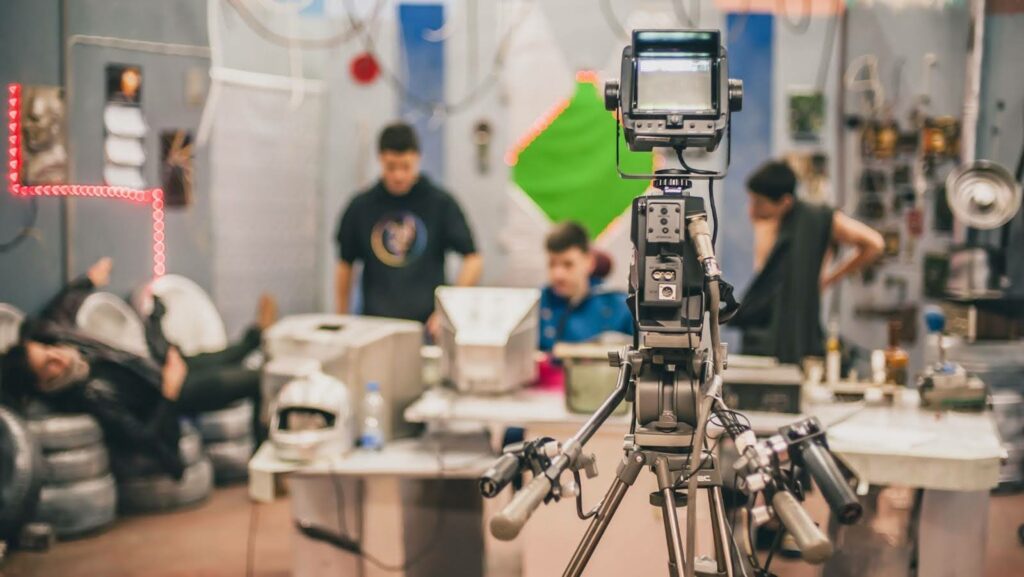The landscape of cinematic storytelling is undergoing a revolutionary transformation. From the inception of an idea to the final frame on screen, artificial intelligence is reshaping how films are conceived, produced, and distributed. This transformation isn’t just incremental—it’s redefining the rules of engagement, allowing creators to break traditional boundaries and explore new creative dimensions.
As the film industry becomes increasingly data-driven, AI is proving to be a powerful collaborator, assisting filmmakers in ways once deemed impossible. The rise of intelligent tools and platforms has opened a gateway to automation, precision, and innovation across the entire production pipeline, impacting screenwriting, casting, cinematography, post-production, marketing, and even audience targeting.
Writing the Future: AI in Screenwriting
The creative process begins long before a camera starts rolling. With the help of AI, writers and directors can now explore storyline generation, character development, and narrative structure with more agility. AI-powered tools analyze vast libraries of scripts, identifying patterns and tropes that work well for certain genres or audience demographics. This helps writers avoid clichés and explore fresh ideas, while also providing predictive insights into which plotlines are likely to resonate.
Machine learning algorithms can now assist in drafting scenes, suggesting dialogues, and even proposing alternate endings based on real-time data analysis. This doesn’t mean replacing human creativity, but rather augmenting it—offering writers a sophisticated brainstorming partner that never tires and always draws from a massive well of content.
Casting and Pre-Production Powered by Data
AI is also bringing efficiency to the casting process. By analyzing an actor’s past performances, social media engagement, and fan demographics, casting directors can make informed decisions about who might best bring a character to life—not only artistically but also from a commercial standpoint. Some studios use facial recognition software and audience testing data to determine which actors are likely to draw the most attention in particular markets.
In pre-production planning, AI-driven tools help estimate costs, optimize shooting schedules, and reduce logistical errors. Advanced software simulates different shooting conditions, allowing producers to plan for weather, lighting, and location challenges ahead of time, significantly improving efficiency and budgeting accuracy.
Enhancing Production with Intelligent Cameras and Virtual Sets
On set, AI is revolutionizing how scenes are captured. Smart cameras can track movement, adjust lighting dynamically, and offer live suggestions to improve a shot based on cinematic principles. AI-enhanced motion capture allows for more realistic integration of CGI characters, and even in live-action, AI helps stabilize shots, maintain focus, and reduce human error during filming.
Virtual production, such as LED volume stages, has been enhanced with AI algorithms that generate real-time backgrounds and environmental changes. Directors can now manipulate digital environments with voice commands or touch interfaces, allowing for greater creative spontaneity and control during shoots. This has been particularly useful in reducing costs associated with travel and set construction.
Redefining Post-Production Workflows
Post-production—traditionally one of the most time-consuming phases—has seen dramatic acceleration thanks to AI. Editors now rely on intelligent tools to sort footage, detect the best takes, and even cut rough versions of scenes automatically.
AI can analyze emotional cues, pacing, and visual consistency to help editors craft scenes that are not only polished but also emotionally resonant.
Color correction and grading, sound design, and visual effects integration have all been enhanced through automation and predictive modeling. AI learns from previous projects to apply stylistic touches that match the tone and aesthetic of the film. Subtitling and dubbing are also becoming more accurate, thanks to speech recognition and language translation technologies.
One standout solution in the market, invideo AI, offers a streamlined ai movie maker that enables creators to bring their visions to life quickly. It combines script-based video generation with smart editing features, making it easier for independent filmmakers and content creators to produce high-quality cinematic work without massive crews or budgets.
Marketing and Audience Targeting with Machine Learning
Artificial intelligence is not only transforming the film creation process—it’s also changing how films reach their audience. AI-powered analytics platforms can predict box office performance based on trailers, monitor online sentiment, and help studios tailor marketing campaigns with precision.
Machine learning models analyze viewer preferences and behaviors to determine which promotional strategies are likely to work best. Studios can now create personalized trailers for different audience segments or release teasers that reflect cultural nuances tailored to specific regions. This granular approach to marketing boosts engagement and maximizes returns on investment.
Moreover, AI can help determine the best time and platform to release a film, especially for streaming services. Whether it’s theatrical, digital, or hybrid distribution, algorithms assist in decision-making that’s both creative and financially strategic.
Democratizing Filmmaking for Independent Creators
Perhaps one of the most profound impacts of AI on filmmaking is its democratizing potential. Independent creators, educators, and marketers who once lacked access to high-end production tools can now harness AI to create professional-level videos with ease. This accessibility is helping diversify storytelling by empowering voices outside traditional studio systems.
For instance, an ai video creator app can assist small-scale content creators in producing polished video narratives, complete with transitions, soundtracks, and visual effects. These apps often come with pre-built templates, voice-over capabilities, and automated editing features, significantly lowering the barriers to entry for new storytellers.
This shift levels the playing field and fosters a more inclusive creative environment—where a great idea and a smartphone can be the only prerequisites for launching a compelling visual story.
Ethical Considerations and Human Creativity
While the advancements are impressive, they also come with ethical considerations. Questions about deepfakes, intellectual property, and the devaluation of human craftsmanship continue to surface. Filmmakers and technologists alike are grappling with how to maintain artistic authenticity and human emotion in an era of automation.
However, many industry experts argue that AI should be seen not as a threat but as a tool—one that enhances rather than replaces the human element. The emotional intelligence, intuition, and lived experiences of a director or writer cannot be mimicked by code. Instead, AI should serve as a creative partner, extending the capabilities of storytellers while allowing them to remain at the helm.
Conclusion
Artificial intelligence is no longer a distant concept in the realm of filmmaking—it is a present force actively shaping how stories are told, shared, and experienced. From script development and casting to post-production and distribution, AI is streamlining workflows, enhancing creativity, and democratizing access to cinematic tools.
As the industry continues to evolve, those who embrace this fusion of art and technology will be best positioned to lead the next era of storytelling. The future of cinema is not just about bigger budgets or better visuals—it’s about smarter storytelling, enabled by the boundless potential of artificial intelligence.



